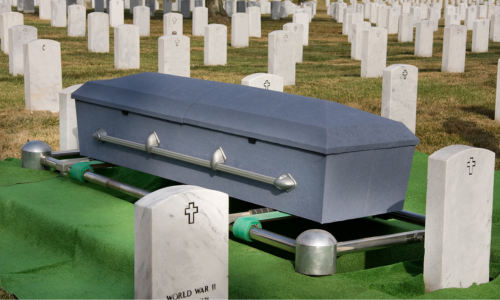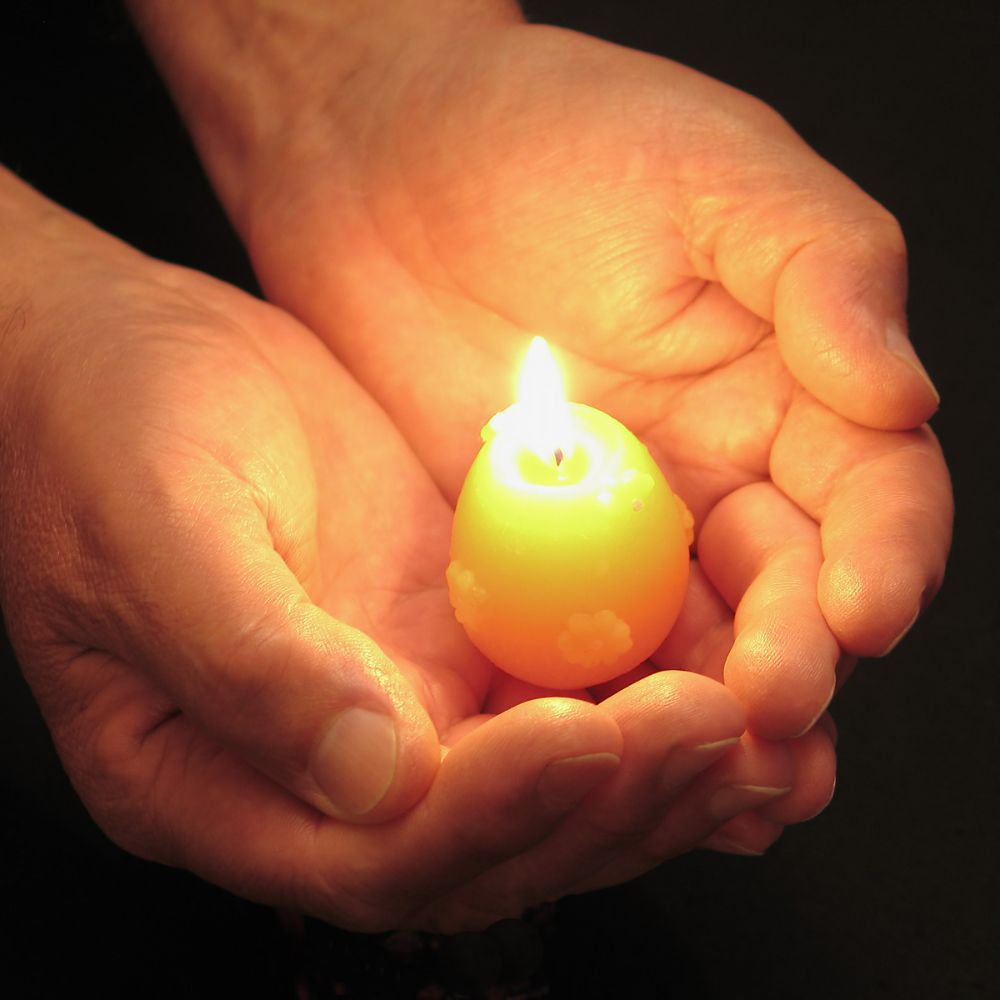All Articles & Guides / Cemetery / A Guide to National Cemetery Burial Procedures
A Guide to National Cemetery Burial Procedures
Whether you're pre-planning a funeral for a veteran or you've just lost a loved one with that status, you probably have questions about how a veteran can be buried in a national cemetery. The information online is scattered across different pages of the Veteran's Administration (VA) website, and it can be difficult to find the answers to your questions quickly. To help, we've created this guide to national cemetery burial procedures. In it, we answer frequently asked questions and offer links to find the information you need quickly.

Symbols on Gravestones in North America
In North America, except for some on the east coast, most of our cemeteries date back less than three hundred years. That means the artwork typically represents somewhat modern ideals, as opposed to more ancient symbols that may be found in Europe. The most common symbols on headstones we see here are symbolic of faith, personal qualities, organizational memberships, and occupations.
Who Is Eligible for VA Benefits?
The VA has a specific set of criteria for who can receive burial benefits and who can be buried in a national cemetery. Most veterans who received any discharge other than dishonorable, active service members, surviving spouses, and dependent children are eligible to be interred in a national cemetery. If the surviving spouse remarried after the veteran's death, they are still eligible; however, if their marriage was divorced or annulled, they are not. In some cases, adult dependent children can be eligible, as well.
Like the benefit for veterans, the VA burial benefit for spouses and children requires the proper paperwork, which includes the death certificate and the veteran's DD214 form, showing their times of active military service and the characterization of their discharge.

If a Veteran Dies, Who Pays for the Funeral?
In gratitude for their service to our country, most vets are eligible to receive special recognition and veterans' death benefits when they pass. These benefits include the option to be buried in a national cemetery, an engraved Presidential Memorial Certificate, a commitment service with military funeral honors, a burial flag, and a headstone or grave marker. If the veteran or their family chooses cremation over burial, the government will provide an urn and niche cover instead of a grave marker.
If the veteran will not be buried in a national cemetery, they could still be eligible for VA burial benefits when they die. They may receive an allowance for burial and funeral costs, a plot allowance, and transportation reimbursement for the transporting of the veteran's remains to the cemetery or graveyard.
Many people ask, "What are the national cemetery urn requirements," and the answer is the administration will supply their own VA-approved urns. But if your veteran insists on a more personal representation of their life, we can tell you that the columbarium niche sizes for national cemeteries should be 10 ½” x 15” x 20” deep. Before purchasing a custom urn, we recommend checking to see if the cemetery allows any other than those supplied as part of the veteran's death benefits.
How Many National Cemeteries Are There?
The VA National Cemetery Administration is responsible for 155 national cemeteries. Some states have more than one, while others have none. You can find a national cemetery in 42 states and Puerto Rico. Many states have their own veteran's cemeteries that are funded by VA grants that have criteria for burial that are like the VA's, but they may also have residency requirements. Review this list of all the VA national cemeteries to learn if there is one close to you.
What to Do When a Veteran Dies
If you are pre-planning the veteran's funeral, taking the time now to apply for pre-need eligibility can take much of the stress out of the burial process for their family. If you have just lost your veteran, here are the steps to take to receive their benefits:
- Choose a funeral director. While this step is optional, a good funeral director can help you plan the funeral and receive your veteran's death benefits.
- Gather the documents you need. The DD214 or other discharge documentation will prove they are eligible for benefits. You may also need additional documents to verify your relationship to the veteran. You'll also need their basic information, including full name, dates of birth and death, gender, social security or military service number, and marital status.
- Decide where the burial will be and what kind of memorial they'd like. Whether they will be interred in a VA national cemetery, state Veterans cemetery, or a private cemetery, the VA will need to know. Decide whether you prefer a headstone, grave marker, niche cover, or medallion as a memorial. Choose any religious emblem or inscription you'd like on a headstone or grave marker.
- Contact the National Cemetery Scheduling Office. Once you've gathered all the necessary documents and information, you or your funeral director should fax or scan and email the scheduling office, and then follow up with a phone call to confirm they received everything.

Is Following the National Cemetery Burial Procedures Worth the Effort?
Carolyn, a woman who recently went through the process to have her mother interred in a national cemetery with military honors, tells us the process was definitely worth it. Here are her feelings about the experience:
"Overall, it was relatively simple - my parents lived in an area with a high proportion of military retirees, and the funeral director was very familiar with the process. My mom never threw paperwork away - particularly about her time in the military - so we were able to find her discharge papers relatively easily and provide them to get the process started. If we had needed to rely on someone else to manage it, it might have been more stressful. It did require coordinating, however; it took several days to get everything confirmed, and we had limited options in terms of timing for the ceremony."
We also asked if Carolyn would recommend others make the effort to do it, as opposed to just choosing a local cemetery. She answered, "I would. In my case, my mother was very explicit about her last wishes, and she was very proud of being a veteran - she wanted to be buried in Jefferson Barracks National Cemetery, which is also where her parents are buried. The experience was very meaningful, and having an honor guard present and Taps played was important to all of us."
We offer our thanks to Carolyn for sharing her thoughts.
We hope this guide makes the process of planning a funeral for your veteran smoother. If you need any veteran-related memorial gifts, like an engravable flag case or photo memorial cards, we're here to help.
Related Content





